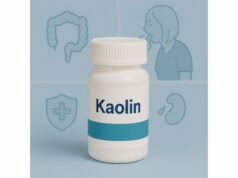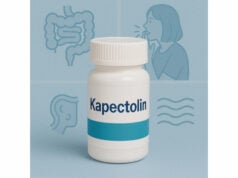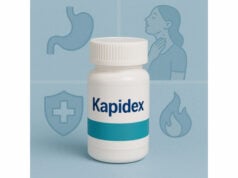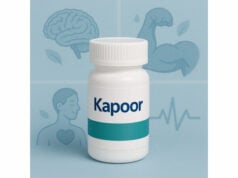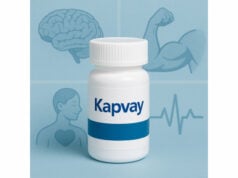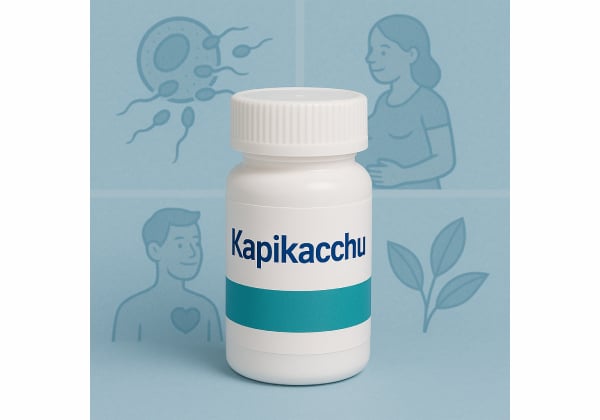
Kapikacchu—better known to botanists as Mucuna pruriens and to Ayurveda as Kaunch Beej—is a tropical legume whose seeds are naturally rich in L-DOPA, the direct biochemical precursor to dopamine. In traditional medicine, Kapikacchu is classified as a nourishing, strengthening herb (balya/vrishya) used for male reproductive health, stress resilience, and vitality. Modern research has explored two main avenues: men’s fertility (sperm count, motility, oxidative stress) and Parkinson-related motor symptoms due to its L-DOPA content. The seed’s unique chemistry makes it potent but also demands respect: levodopa levels vary by preparation, interactions are real, and quality control matters. This guide offers a practical, evidence-aware view—what Kapikacchu can and cannot do, how to use it correctly (powders versus standardized extracts), who should avoid it, safe dosage ranges, and how to evaluate product labels. You will also find a concise, plain-language safety checklist and a balanced summary of the clinical evidence so you can decide—together with your clinician—whether Kapikacchu fits your goals.
Quick Facts
- Traditionally supports male fertility and stress resilience; research shows improved sperm count and motility after 3 months.
- Typical adult ranges: 5 g/day seed powder or 250–500 mg standardized extract (15–20% L-DOPA) once or twice daily for limited courses.
- Safety caveat: variable L-DOPA across products; monitor for nausea, vivid dreams, palpitations, or mood changes and avoid long unsupervised use.
- Avoid if pregnant or breastfeeding, under 18, using MAO inhibitors or certain antipsychotics, or if you have active psychiatric illness unless supervised.
Table of Contents
- What is Kapikacchu and why it matters
- Benefits: what the evidence really shows
- How to take Kapikacchu correctly
- Timing, stacking, and real-world use
- Safety: who should avoid and interactions
- Evidence in context and quality checklist
What is Kapikacchu and why it matters
Names and parts used. Kapikacchu (Kaunch Beej, velvet bean, cowhage) refers to the seeds of Mucuna pruriens. Traditional Ayurveda uses the seed most often (powdered or decocted); the root and pod hairs appear in some formulas, but the seed is the pharmacologically relevant part for modern use.
Key constituents. The signature molecule is L-DOPA (3,4-dihydroxy-L-phenylalanine)—the immediate precursor to dopamine. Natural L-DOPA in M. pruriens seeds typically falls around a few percent by weight in authenticated raw seed; commercial extracts may concentrate it or—problematically—report it inconsistently. Seeds also contain proteins, lipids, and alkaloids (e.g., mucunine, prurienine) with antioxidant activity that may assist reproductive endpoints via reduced oxidative stress.
How it works (plain language).
- Reproductive axis: Chronic stress, oxidative damage, and endocrine shifts can impair spermatogenesis. Kapikacchu appears to reduce oxidative stress in seminal plasma and normalize stress-linked hormones (e.g., cortisol, prolactin), which can improve sperm count and motility over weeks to months.
- Dopamine pathway: The seed’s L-DOPA can raise dopamine levels after conversion in the body. This underlies research interest in Parkinson-related motor symptoms and may explain reports of improved motivation or libido—but it also explains side effects (nausea, palpitations) and drug interactions.
- Adaptogenic-like profile: Users often describe steadier mood and energy during stressful periods, likely from combined antioxidant effects and dopamine support. This is not a treatment for major depression or anxiety disorders.
Why variability matters. Because L-DOPA is the main active, dose accuracy is crucial. Two different capsules labeled “Mucuna extract” can deliver very different amounts of L-DOPA. Some products provide standardized extracts (e.g., 15–20% L-DOPA); others list only total herb mass. A practical rule: buy standardized products from reputable brands or use whole-seed powder with consistent scoop weights and conservative dosing.
Where Kapikacchu fits. If you are targeting male fertility with high oxidative stress or stress-linked subfertility—and you are not on interacting medicines—Kapikacchu can be considered for a time-limited trial (typically 12 weeks) alongside core pillars: lifestyle, micronutrition (e.g., folate, zinc as appropriate), and medical evaluation. If you are exploring it for Parkinson-related symptoms, self-experimentation is not appropriate; L-DOPA is a prescription-grade pathway that requires medical supervision to optimize benefits and limit risks like dyskinesia.
What to expect. Effects are not immediate for reproductive goals; typical reports describe progressive changes across 8–12 weeks. Dopamine-linked effects (nausea, vivid dreams, alertness) may appear within days and usually signal the dose is high for you.
Benefits: what the evidence really shows
1) Male fertility (oligozoospermia, asthenozoospermia, stress-linked subfertility).
Clinical investigations have repeatedly associated M. pruriens seed powder with improved semen parameters after ~3 months of use in infertile men. Outcomes include:
- Sperm concentration and motility: Improvements versus baseline are common after 90 days, especially in men with low counts or low motility.
- Oxidative stress markers: Seminal plasma shows lower lipid peroxidation with restoration of antioxidant defenses (e.g., glutathione, vitamins C/E).
- Hormonal milieu: In some cohorts, testosterone and LH rose while FSH and prolactin trended toward normal—consistent with a stress-recovery pattern rather than supraphysiologic stimulation.
Important context: Many of these studies are open-label or prospective cohorts without placebo control. They still matter because the magnitude of change over time in high-stress, infertile populations is clinically meaningful, but expectations should remain realistic. A 12-week window is a reasonable trial length with pre/post semen analyses.
2) Stress resilience, mood, and vitality.
By supporting dopamine synthesis and reducing oxidative stress, Kapikacchu may blunt stress signals (e.g., cortisol) and improve perceived energy. While human data are strongest where stress intersects with fertility, everyday users often report calmer focus. These effects are adjunctive, not curative; chronic anxiety, major depression, and sleep disorders require standard care.
3) Parkinson-related research (specialist domain).
Because Kapikacchu provides natural L-DOPA, studies have compared seed preparations with conventional levodopa/carbidopa. Single-dose crossover trials suggest that certain Mucuna preparations can match or even exceed standard levodopa in onset and duration for motor benefit. However, continuous unsupervised use increases side-effect risks (nausea, dyskinesia) and drug–drug complexities. If you have Parkinson’s disease, discuss any Mucuna use with your neurologist; DIY substitution is not advised.
4) Libido and sexual function.
Historically classified as vrishya (aphrodisiac), Kapikacchu’s libido support is plausibly linked to dopaminergic tone and reduced oxidative stress. Rigorous placebo-controlled data are limited; still, men in fertility studies frequently reported improved sexual well-being alongside objective semen changes.
What Kapikacchu does not do.
- It does not replace evaluation for varicocele, endocrine disorders, infections, or genetic factors in infertility.
- It is not a comprehensive Parkinson’s therapy or a substitute for levodopa/carbidopa under medical care.
- It is not an evidence-based treatment for primary psychiatric disease.
Realistic benefit profile (summary).
- Most likely: incremental improvements in sperm count/motility and oxidative stress markers over 12 weeks; subjective stress resilience.
- Possible with supervision: contribution to Parkinson’s motor symptom control within an evidence-based regimen.
- Less certain: broad claims around cognition, weight loss, or athletic performance—these remain speculative.
How to take Kapikacchu correctly
Forms you will encounter
- Whole-seed powder (churna): Traditional format; typically mixed with warm milk, water, or a smoothie.
- Standardized extracts: Capsules or powders labeled with % L-DOPA (often 15–20%); better for dose precision.
- Combination formulas: Kapikacchu blended with ashwagandha, gokshura, or shatavari in male-fertility stacks; check each ingredient’s interactions.
Evidence-informed adult ranges (not medical advice)
- Whole-seed powder: 5 g/day, usually split 2–3 doses with food, for up to 12 weeks, followed by reassessment. This mirrors amounts used in several clinical cohorts.
- Standardized extract (15–20% L-DOPA): 250–500 mg once or twice daily with meals for limited courses (e.g., 8–12 weeks), providing roughly 37–200 mg of L-DOPA/day depending on product and schedule.
- Parkinson-related use: Must be clinician-directed. Dosing depends on total daily levodopa requirements, timing, and co-administration with carbidopa or other agents.
Titration tips
- Start lower for 7–10 days (e.g., 250 mg extract once daily with food or 2 g seed powder/day) to check tolerance.
- Increase gradually toward your target only if side effects are absent or mild.
- Divide doses with meals to reduce nausea and palpitations.
- Time-bound cycles: For fertility or stress goals, think in 12-week blocks with pre/post labs (semen analysis, ferritin, B12 if long use, as appropriate).
How to read the label
- Look for standardization (“L-DOPA 15%” or “L-DOPA 20%”) and a Certificate of Analysis (CoA) from a third-party lab.
- Prefer products that list both extract amount and L-DOPA per serving (e.g., “350 mg extract standardized to 15% L-DOPA = 52.5 mg L-DOPA”).
- Avoid blends that hide active amounts under “proprietary” headings.
Food, drink, and nutrient considerations
- Take with a protein-moderate meal to reduce nausea but avoid very high-protein meals around dosing if you notice blunted effects (amino acid competition with L-DOPA).
- Hydrate normally; coffee or strong tea close to dosing may increase jitteriness in sensitive users.
- If using long-term under medical care (e.g., Parkinson’s), clinicians often monitor B12, folate, iron, and homocysteine and consider vitamin B6 contextually.
When to stop or pause
- Immediate stop for hallucinations, severe nausea/vomiting, severe palpitations, new agitation, or rash.
- Pause and reassess if you notice troublesome dreams, mood swings, or blood pressure changes.
- End a cycle after 8–12 weeks and review objective progress (e.g., semen parameters) before continuing.
Practical example (fertility focus)
- Weeks 0–2: 250 mg extract (15–20% L-DOPA) with breakfast.
- Weeks 3–12: increase to 250 mg twice daily with meals if tolerated.
- Week 12: repeat semen analysis; continue only if benefits clearly outweigh side effects and no interactions exist.
Timing, stacking, and real-world use
Best time to take it
Kapikacchu is food-tolerant; most people feel best taking it with breakfast or lunch. Evening dosing can cause vivid dreams or restlessness in some users due to dopaminergic activity.
How long until you notice something?
- Days 1–7: You may feel mild nausea or a lift in alertness; if uncomfortable, halve the dose and take with a larger meal.
- Weeks 2–4: Subtle changes in energy or stress tolerance; libido changes in some individuals.
- Weeks 8–12: Objective fertility markers (count, motility) are where meaningful changes are most likely—verify with lab testing, not just perception.
Stacks that make sense (and those that do not)
- Synergistic for fertility:
- Antioxidants (coenzyme Q10, vitamin E, vitamin C) if dietary intake is low.
- Zinc (for deficiency) and folate support—based on labs.
- Ashwagandha for stress regulation if no thyroid autoimmunity and no sedative drug interactions.
- Use caution/avoid:
- Other dopaminergics (L-tyrosine high doses, stimulants) that may compound side effects.
- MAO inhibitors (pharmaceutical or herbal with strong MAOI activity) due to hypertensive and neuropsychiatric risks.
- High-dose B6 (pyridoxine) without clinical rationale if Kapikacchu is your only dopaminergic—B6 can alter peripheral decarboxylation dynamics in specific contexts.
Lifestyle levers that amplify results
- Sleep: 7–9 hours, consistent schedule—dopamine signaling is sleep-sensitive.
- Nutrition: Mediterranean-style pattern emphasizing vegetables, legumes, fish, nuts, and olive oil for baseline antioxidant support.
- Exercise: 150+ minutes/week mixed aerobic and resistance training; both fertility and neurologic outcomes correlate with activity.
- Substance habits: Limit alcohol and smoking; both degrade semen parameters and interact with CNS outcomes.
Three real-world scenarios
- Stress-linked subfertility (office worker, late nights):
- Start 250 mg standardized extract with breakfast for 10 days; increase to 250 mg twice daily if well-tolerated.
- Pair with sleep hygiene and antioxidant-rich diet.
- Re-test semen at week 12; discontinue if no objective improvement.
- Athletic male with low motility after illness:
- Whole-seed powder 5 g/day split AM/PM for 8–12 weeks.
- Add zinc if low, resume progressive resistance training, and manage post-viral fatigue with graded activity.
- Monitor for palpitations and adjust dose down if they occur.
- Parkinson’s patient curious about natural options:
- Do not self-start. Bring your neurologist a standardized product label; discuss whether and how it could fit into a supervised plan.
- Be prepared that adding Kapikacchu may change levodopa needs, timing, and side-effect risk.
Common mistakes (and easy fixes)
- Buying non-standardized capsules → Choose a product with % L-DOPA and third-party testing.
- Dosing in the evening → Shift to morning or midday to avoid sleep disruption.
- Chasing rapid results → Commit to a full 8–12-week window for fertility endpoints.
- Ignoring interactions → Review all meds/supplements with a clinician or pharmacist before starting.
Safety: who should avoid and interactions
Common, usually mild effects
- Nausea, bloating, loose stools, headache, palpitations, restlessness, or vivid dreams—often dose-related and improved by taking with food or lowering the dose.
Less common but important
- Mood changes, impulse-control behaviors (rare at typical wellness doses but possible via dopaminergic pathways), orthostatic dizziness, or skin rash. Stop and seek care if these appear.
Red-flag symptoms—stop and contact a clinician
- Hallucinations, severe agitation, chest pain, severe hypertension or hypotension, sustained tachycardia, or new severe headaches.
Who should not use Kapikacchu (unless a specialist explicitly approves)
- Pregnant or breastfeeding individuals (insufficient safety data).
- Children and adolescents under 18 for general wellness purposes.
- History of psychosis, bipolar disorder, or uncontrolled anxiety (dopaminergic effects can destabilize symptoms).
- Active peptic ulcers or significant cardiovascular arrhythmias without clearance.
- Parkinson’s disease patients already on dopaminergic therapy—unless coordinated by a neurologist.
- Known allergy to Mucuna species.
Drug interactions (high-yield)
- MAO inhibitors (MAOIs): Pharmacologic or strong herbal MAOIs can interact dangerously with dopaminergic agents—avoid.
- Antipsychotics (dopamine antagonists): May counteract Kapikacchu and destabilize psychiatric control—avoid unless psychiatry explicitly agrees.
- Levodopa/carbidopa or other dopaminergics: Combining changes total levodopa exposure—specialist supervision required.
- Antihypertensives and stimulants: Monitor blood pressure and heart rate; adjust with clinician guidance if needed.
- Iron supplements: Can bind or affect absorption if taken simultaneously; separate by 2–4 hours.
Medical testing considerations
- For H. pylori or other GI tests unaffected by dopamine, Kapikacchu is neutral; however, if you are undergoing catecholamine or prolactin testing, pause Kapikacchu (per clinician instructions) to avoid confounding results.
- Long, supervised dopaminergic regimens may prompt periodic B12 and folate checks.
Practical safety checklist
- Do you take MAOIs, antipsychotics, or dopaminergics? If yes, stop and consult.
- Do you have psychiatric instability? Avoid.
- Are you pregnant/breastfeeding? Avoid.
- Can you run a time-limited trial (8–12 weeks) with a concrete outcome (e.g., semen analysis)? If not, reconsider.
- Do you have a quality-verified product? If unsure, replace it before starting.
Evidence in context and quality checklist
Strength of evidence (at a glance)
- Male fertility: Multiple clinical investigations—often prospective cohorts in infertile men—report improvements in sperm count/motility and reduced oxidative stress after ~3 months of seed powder. While not all are randomized or placebo-controlled, the consistency across cohorts and biological plausibility (dopamine/endocrine, antioxidant effects) support a cautiously optimistic stance for adjunctive use.
- Parkinson-related symptoms: Single-dose crossover trials have shown that certain Mucuna seed preparations can perform comparably to standard levodopa formulations for motor “on” time and latency to “on.” Continuous use is a different question; side-effect burdens and dose-finding complexity warrant specialist oversight.
Quality problems in the market
- Label mismatch: Independent analyses have found actual L-DOPA content in commercial Mucuna supplements to range from near-zero to far above labeled estimates, sometimes more than two-fold higher. That’s a serious issue for both efficacy and safety.
- Unlisted adulterants: Some authorities have screened products to ensure they do not contain pharmaceutical decarboxylase inhibitors (e.g., carbidopa); reputable products should test clean.
How to buy better (a quick checklist)
- Standardization stated: Choose products standardizing L-DOPA (e.g., 15–20%).
- Third-party testing: Look for NSF, USP, Informed Choice, or a CoA with lot-specific L-DOPA quantification.
- Transparent math: Labels should show mg extract and mg L-DOPA per serving so you can calculate daily exposure.
- Sane dosing: If a single capsule would provide >200 mg L-DOPA, that is unusually high for general wellness and raises tolerance questions.
- Batch stability: Prefer brands with published testing across multiple lots; L-DOPA is sensitive to processing and storage.
Putting it all together—when Kapikacchu makes sense
- You want to optimize male fertility and can commit to a 12-week program with lifestyle upgrades and pre/post testing.
- You are not on interacting meds and have a standardized, tested product.
- You are willing to start low, monitor side effects, and stop if objective gains do not appear.
When it does not
- You are pregnant/breastfeeding or have psychiatric instability.
- You plan to self-treat Parkinson’s disease without medical guidance.
- You cannot verify product quality.
Simple decision grid
- Goal = fertility: Try a time-boxed 12-week standardized regimen with labs and lifestyle.
- Goal = stress/energy: Consider lower doses and short cycles, always watching mood and sleep.
- Goal = Parkinson’s: Specialist only.
References
- Mucuna pruriens Reduces Stress and Improves the Quality of Semen in Infertile Men (2010) (RCT/Prospective)
- Effect of Mucuna pruriens on semen profile and biochemical parameters in seminal plasma of infertile men (2008)
- Mucuna pruriens in Parkinson disease (2017)
- Levodopa Content of Mucuna pruriens Supplements in the NIH Dietary Supplement Label Database (2022)
- A Systematic Review on Use of Medicinal Plants for Male Infertility (2021) (Systematic Review)
Medical Disclaimer
This article is educational and is not a substitute for personalized medical advice, diagnosis, or treatment. Always consult a qualified healthcare professional before starting Kapikacchu, especially if you have medical conditions, are trying to conceive under clinical care, or take prescription medications. Seek urgent care for hallucinations, chest pain, severe mood changes, sustained palpitations, severe headache, or fainting. Pregnant or breastfeeding individuals and anyone under 18 should avoid Kapikacchu unless a specialist explicitly recommends it.
If this guide helped you, please consider sharing it on Facebook, X (formerly Twitter), or any platform you prefer, and follow us for more clear, evidence-based wellness articles. Your support helps us continue creating high-quality content.

